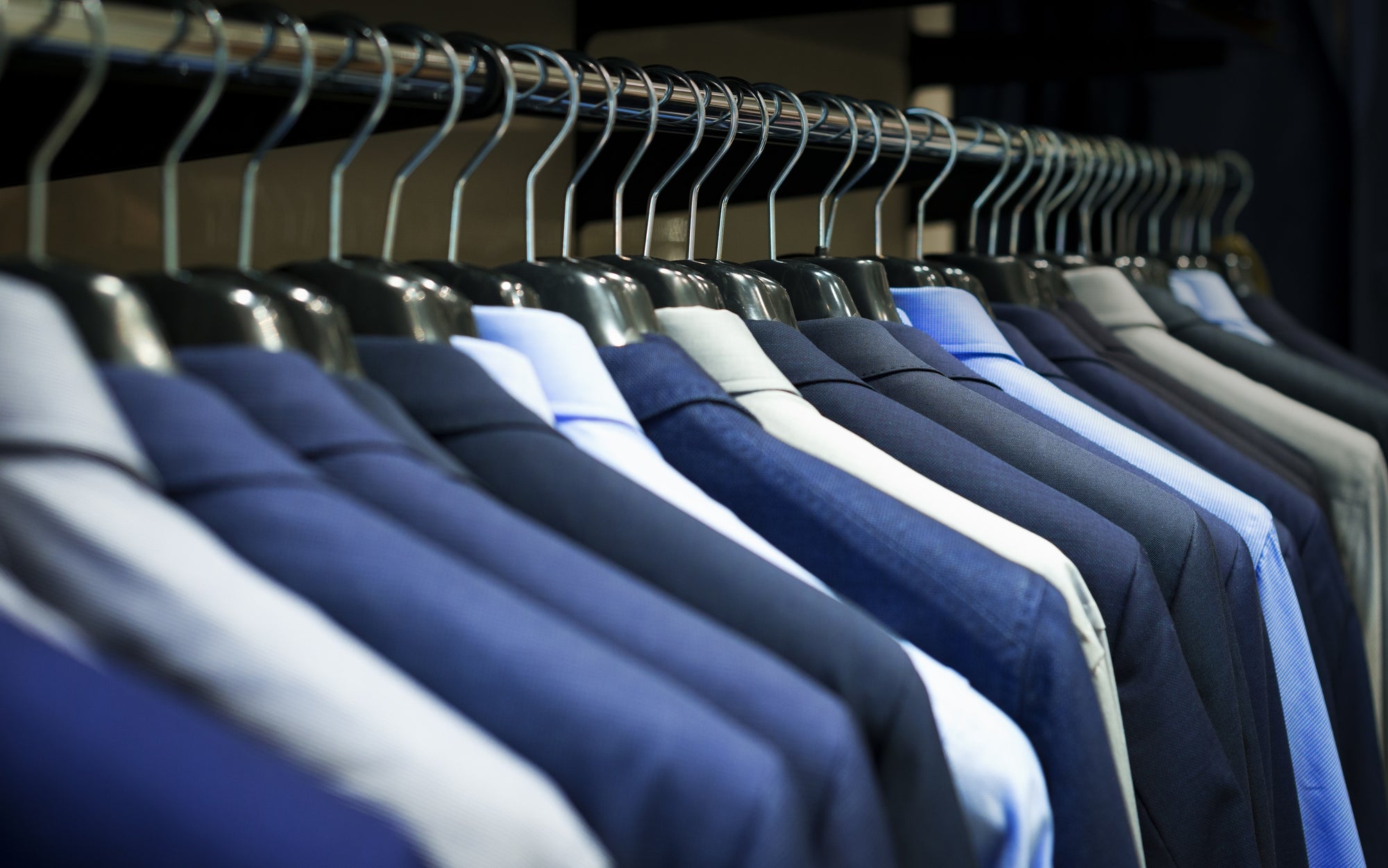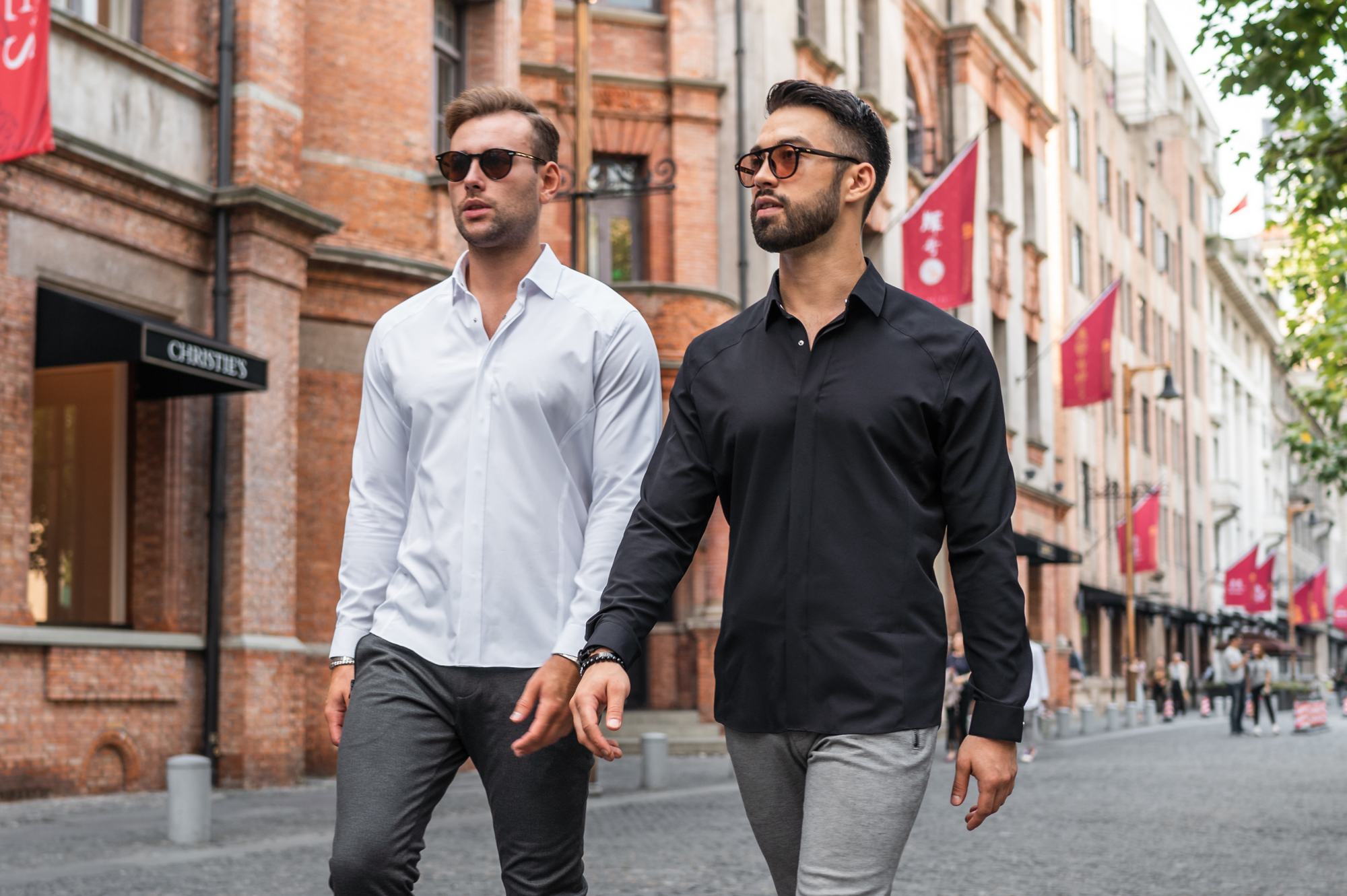In today’s fashion landscape, understanding different dress codes is key to nailing the perfect outfit for any occasion. Whether it’s smart casual, business casual, or just casual, each style has its unique characteristics and appropriate settings. Let's dive into what each dress code entails and how to master them.
While a casual type of look can still help you feel and look great and not go overboard, it’s important to know what the different types of “casual” are. xSuit is here to help you understand the subtleties and differences between the main styles of casual dress codes.
Understanding Casual Dress Codes
Navigating the world of dress codes can be a daunting task. From casual to smart business casual, each style carries its own set of rules and expectations. In this guide, we'll explore the different levels of dress codes, helping you dress confidently for any occasion.

Casual Wear: The Basics of The “Casual” Dress Code
It’s important to mention that the casual dress code we are talking about is not the same kind of casual as when you are lounging around the house; when a worn out wrinkly t-shirt and mesh shorts could do the trick. The casual dress code is all about comfort blended with style. It's an obvious step above loungewear, focusing on looking presentable without being formal. Key pieces include polo shirts, neat jeans, and minimalistic clothes that can be mixed and matched. Brands like Levi's and Uniqlo are go-to's for casual attire. Remember, casual doesn't mean sloppy – it's about relaxed elegance; so break out the iron or steamer and make sure your clothes are presentable.
This allows you to have the flexibility to layer depending on the season and occasion - creating a remarkable amount of different outfit combinations from only a few articles of clothing. The key here is comfort, bringing a positive and relaxed aura that shows you care, but in an understated way.
Key Elements of Casual Dress
- Tops: Opt for neat, well-fitting t-shirts, polo shirts, or casual button-downs. Avoid oversized logos or graphics.
- Bottoms: Jeans are a staple in casual wear, but chinos or casual trousers also work well. The key is a clean, well-fitted look.
- Footwear: Sneakers, loafers, or casual boots complement a casual outfit. Keep them clean and in good condition.
- Accessories: Minimal accessories like a simple watch or a casual belt can elevate the outfit.

What is Smart Casual Dress Code? The Perfect Middle Ground.
Smart casual dress code strikes a balance between casual comfort and formal elegance. It typically involves replacing jeans with chinos or slacks and adding polished elements like blazers or long-sleeve shirts. This dress code is perfect for social gatherings or less formal business events. Brands like Gap, Polo Ralph Lauren, and Zara are quintessential for smart casual attire. It's about upping the ante from casual wear, offering a more refined look while maintaining a relaxed feel.
Smart Casual vs Casual: What’s The Difference?
The key difference between smart casual and casual lies in sophistication. Smart casual steps up from the basic casual look, focusing more on a polished appearance.
Smart Casual Attire Examples:
- Tops: Long-sleeve shirts, polo shirts, and smart knitwear. T-shirts can work if paired with a blazer.
- Bottoms: Chinos or tailored trousers are preferred over jeans. They should be well-fitted and in neutral colors.
- Footwear: Opt for dress shoes like Oxfords, loafers, or stylish boots.
- Accessories: A leather belt, a classic watch, and perhaps a neat scarf or a tasteful hat can complete the look.

What Does Business Casual Mean? Elegance in the Workplace.
Business casual outfits are more relaxed versions of traditional formal business wear such as a men’s dress suit or business suit for men. It's common in modern workplaces and professional events where full suits aren't required.
When eyeing the biggest differences between business casual vs smart casual, it should be noted that business casual is a step up from smart casual, leaning towards more professional attire. It typically involves solid-colored pants, a button-down shirt, and the inclusion of blazers or sport coats. T-shirts are a no-go in this dress code. Business casual is still more casual than what you would wear to a formal business meeting or a formal event such as a wedding. Brands like Banana Republic exemplify business casual style.
What about polo shirts? Are polo shirts business casual? In many settings and in many workplaces, the answer is yes. Typically, polo shirts are considered elevated above casual wear and therefore count as appropriate in business casual settings. You can even wear a polo shirt with a suit to elevate it even more.
Components of Business Casual
- Tops: Button-down shirts (like the xShirt) are a staple. Collared shirts, preferably long-sleeved, in solid colors or subtle patterns.
- Bottoms: Dress pants or neat chinos. Dark colors are preferable for a more professional look.
- Footwear: Dress shoes like Oxfords, Derbys, or brogues are appropriate.
- Accessories: A conservative tie can be an option, along with a leather belt and a watch.
Understanding the Differences: Casual vs. Smart Casual vs. Business Casual
It's important to differentiate between these three dress codes. Casual is the most relaxed, focusing on comfort and simple style. Smart casual is the middle ground, offering a blend of casual ease and a touch of formality. Business casual is more polished, suitable for professional environments while still being less formal than traditional business wear.
Dressing for Success Across Dress Codes With xSuit
Whether you're dressing in casual, smart casual, or business casual attire, understanding the nuances of each dress code is key to making a great impression. Looking to delve deeper into versatile dressing? Don’t miss our guide on ‘The Versatility of a Dress Shirt – How to Change Between Formal and Casual’.


